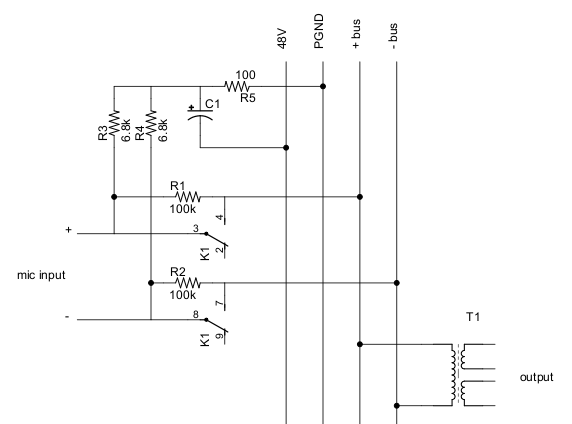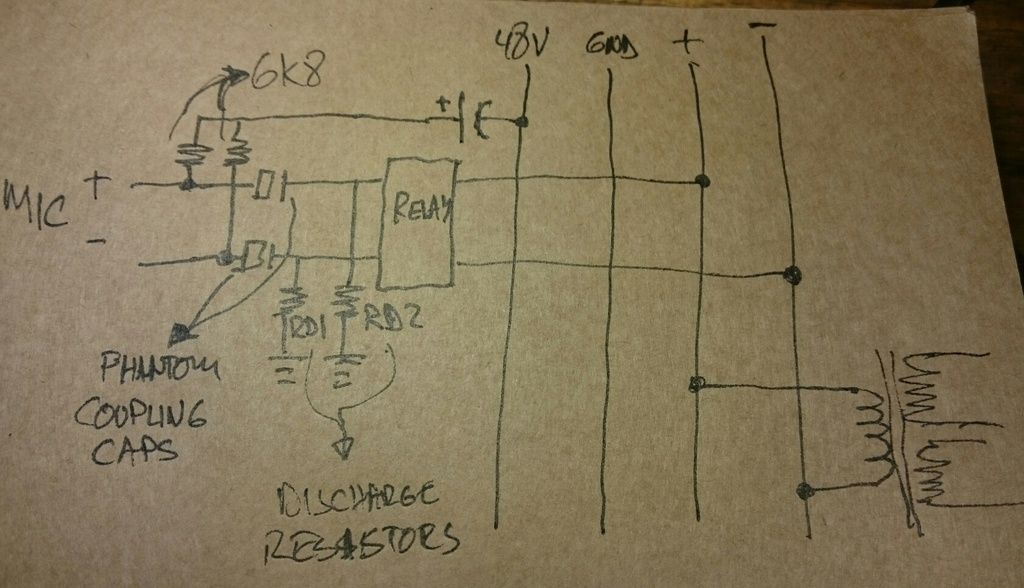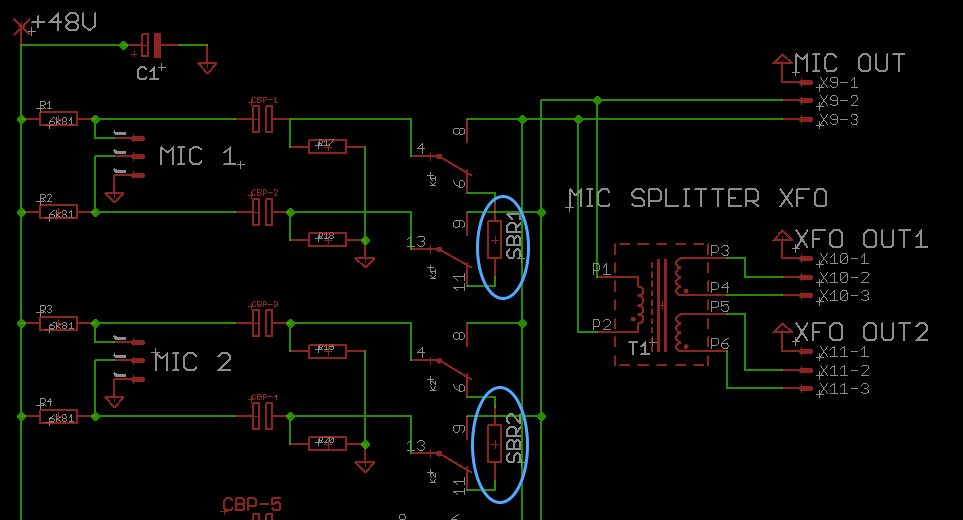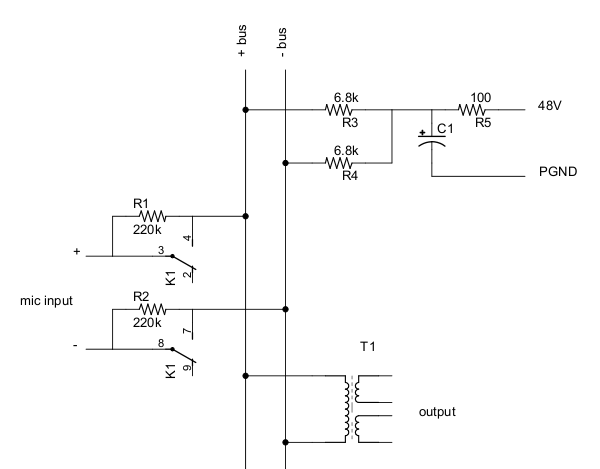pablobolche
Well-known member
Hello...
I am making an 8 Microphone selector switcher and need some insight...
the plan..
All microphone would be phantom powered...so box would have it's own 48v feeding all 8 microphones at all times. ..this would translate in 70-80 mA@48v..
Switching would be done with relays....with separate +RVolt and Rgnd..
Output will go to a mic splitter transformer and finally out.(not in the picture...)
Now...on the PCB I will have traces to all 8 relays and only one will conect at a time....would these non used traces act as antenna?? Is there a problem doing this??
Regarding posible switching noises...are there any condensors to gnd or stuff I should look into??
Thank You
I am making an 8 Microphone selector switcher and need some insight...
the plan..
All microphone would be phantom powered...so box would have it's own 48v feeding all 8 microphones at all times. ..this would translate in 70-80 mA@48v..
Switching would be done with relays....with separate +RVolt and Rgnd..
Output will go to a mic splitter transformer and finally out.(not in the picture...)
Now...on the PCB I will have traces to all 8 relays and only one will conect at a time....would these non used traces act as antenna?? Is there a problem doing this??
Regarding posible switching noises...are there any condensors to gnd or stuff I should look into??
Thank You











![Soldering Iron Kit, 120W LED Digital Advanced Solder Iron Soldering Gun kit, 110V Welding Tools, Smart Temperature Control [356℉-932℉], Extra 5pcs Tips, Auto Sleep, Temp Calibration, Orange](https://m.media-amazon.com/images/I/51sFKu9SdeL._SL500_.jpg)


























